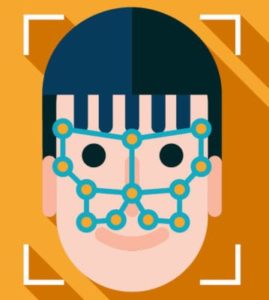
Trinamix, a subsidiary of the German chemical giant BASF, has announced a partnership with Qualcomm’s Software Accelerator Program to promote its facial recognition technology to Android phone manufacturers.
Founded in 2015 by researcher Ingmar Bruder, Trinamix has a unique proprietary technology that uses the backscatter from infrared beams in combination with 2D infrared images and a 3D depth map to identify various surface materials.
As Fast Company reports, this method — discovered by Bruder while he was working for BASF on research into how to make organic photovoltaic paint — can make it possible to tell the difference between a photograph of a person’s face printed on paper, a person wearing a realistic mask, a recently deceased person, and a living one.
Bruder hopes to bring this technology to Android phones, providing manufacturers with a competitive advantage in the hotly contested market for the most secure and accurate biometric facial recognition system.
“Apple did a great job with facial recognition,” Bruder told Fast Company, referring to Apple’s Face ID login for iPhones. “What we have invented is a fundamentally new approach to secure user authentication, based on our material detection. It’s an unprecedented ability to sense live skin.”
Trinamix now has more than 400 global patents pending in 75 patent families and has been granted an additional 107 patents.
As detailed in Fast Company’s report, the system developed by Bruder combines a near-infrared spectroscopy 1 megapixel sensor with LED flood illumination a light projector — designed to be eye-safe — with a proprietary beam analysis that can gauge the composition of the material it is pointed at. Because different materials reflect back different light beam patterns — even if they are the same shape and color — the system can detect the slightest of differences like skin with blood flowing beneath it and skin without.
This can potentially make it a valuable tool for biometric authentication at a time when the industry is struggling with reports of inaccuracies and bias based on gender and race.
A recent NIST study found that some facial recognition systems can be up to 100 times more likely to misidentify a person of color or a woman.
Bruder noted that despite Trinamix’s ambitions to see a rapid adoption of its technology it doesn’t plan to be a part of government surveillance.
“Our preference is not going to China,” he said, alluding to the Chinese governments widely reported use of various types of biometric surveillance systems on a muslim minority group living in the country’s northwestern Xinjiang region.
Trinamix hopes to have its facial recognition systems running in Android and Windows devices that run on Qualcomm’s Hexagon processor on Snapdragon platforms at next year’s MWC 2021.
Source: FastCompany

Follow Us